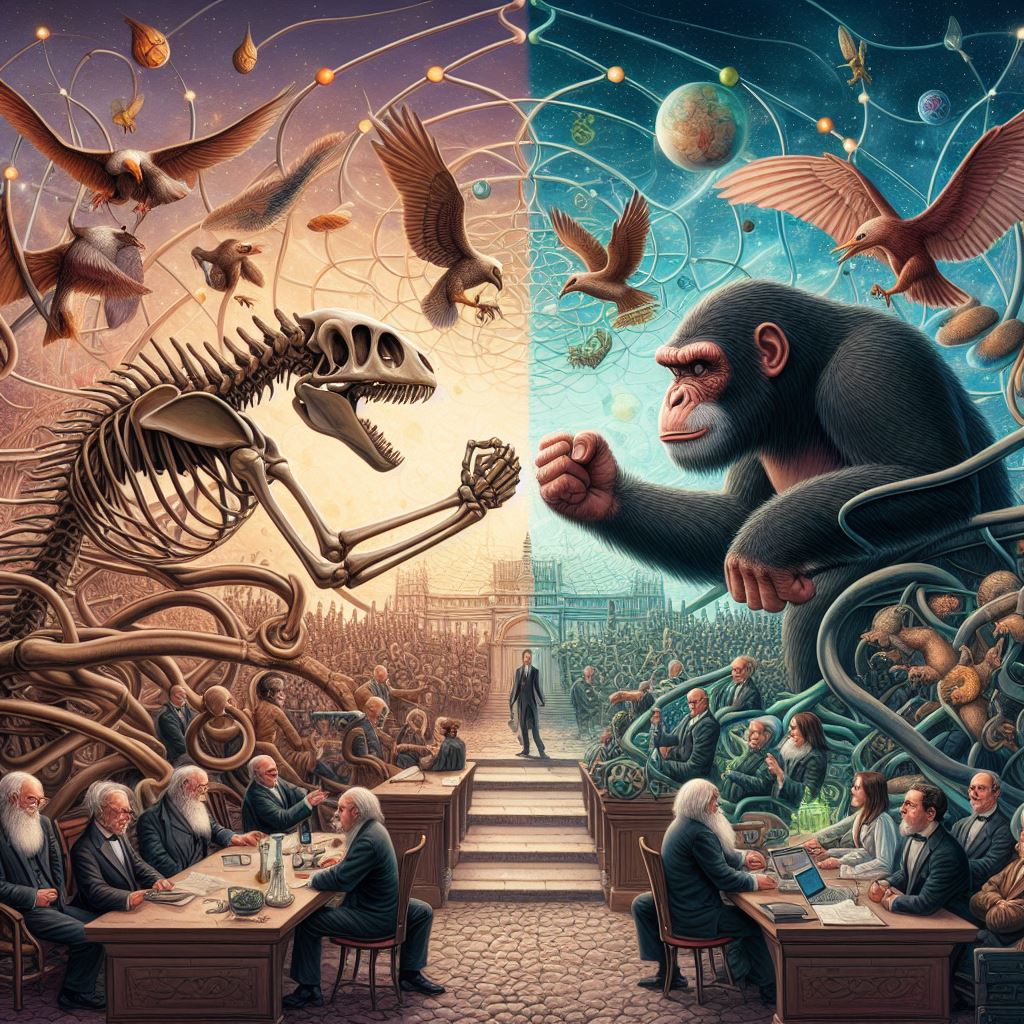Lamarck vs. Darwin: The Theories of Evolution
A Duel of Evolutionary Giants: Lamarckian vs. Darwinian Perspectives
In the realm of evolutionary biology, two giants stand at the forefront: Jean-Baptiste Lamarck and Charles Darwin. Let’s delve into the distinctive theories these visionaries proposed, shedding light on the nuances that have shaped our understanding of evolution.

Lamarck’s Evolutionary Leap
Inheritance of Acquired Characteristics: A Paradigm Shift
Lamarck proposed that organisms could acquire traits during their lifetime, and these acquired characteristics would be passed on to future generations. This theory, known as the “inheritance of acquired characteristics,” suggests a direct link between an organism’s environment and its evolutionary progression.
The Role of Use and Disuse: Shaping Evolutionary Paths
Another key tenet of Lamarck’s theory was the concept of use and disuse. According to him, organs or features that an organism used extensively would develop and strengthen, while those neglected would deteriorate over generations. This laid the foundation for a dynamic and adaptive view of evolution.
Darwin’s Natural Selection: The Survival Game
Natural Selection as the Driving Force
Darwin’s theory, in stark contrast, centered around natural selection. He proposed that the environment acted as a selective force, favoring traits that conferred advantages for survival and reproduction. Over time, these advantageous traits would become more prevalent in a population.
The Role of Variation: Nature’s Creative Palette
Variation within a population, according to Darwin, was the raw material for evolution. Through the mechanism of natural selection, certain variations would become more common, leading to the gradual divergence of species over generations.
Divergence in Perspectives: Lamarckian Adaptation vs. Darwinian Selection
In the comparison of Lamarck and Darwin, the crux lies in their views on adaptation and selection. Lamarck envisioned a more direct and purposeful process, driven by an organism’s interaction with its environment. In contrast, Darwin proposed a more gradual and nuanced mechanism, where nature played the role of a meticulous sculptor shaping the destiny of species.
Navigating the Evolutionary Landscape: Impact on Modern Biology
The debate between Lamarck and Darwin has left an indelible mark on the field of evolutionary biology. While Lamarck’s ideas have been largely debunked, elements of Darwinian natural selection remain the cornerstone of modern evolutionary theory.
Conclusion: A Tapestry Woven with Evolutionary Threads
As we traverse the annals of evolutionary thought, the clash between Lamarck and Darwin reverberates through time. Their theories, though disparate, have collectively contributed to our comprehension of the intricate web of life. In the ongoing narrative of evolution, each perspective adds a layer to the rich tapestry of our understanding, reminding us that the story of life is a dynamic interplay of adaptation, selection, and the ever-unfolding mystery of existence.